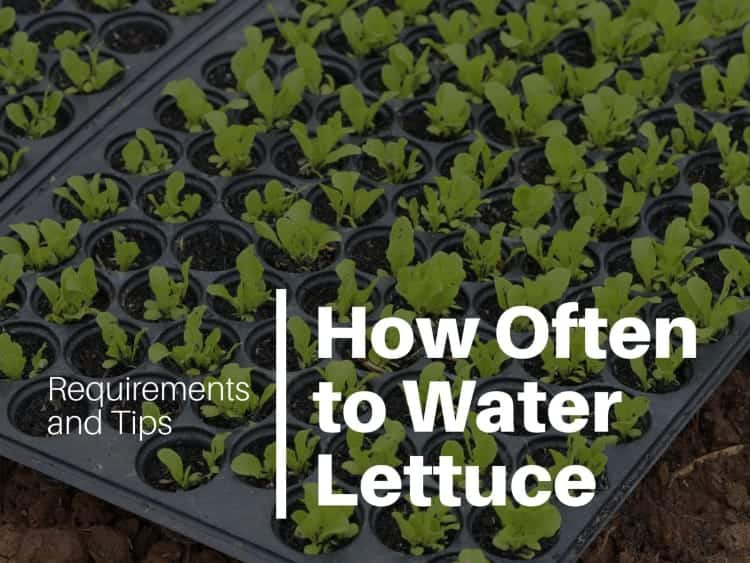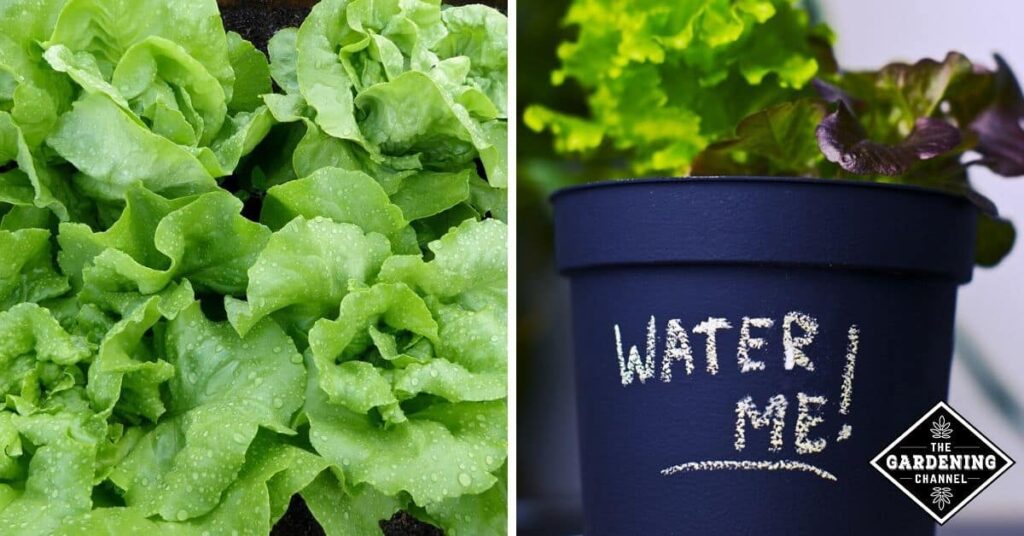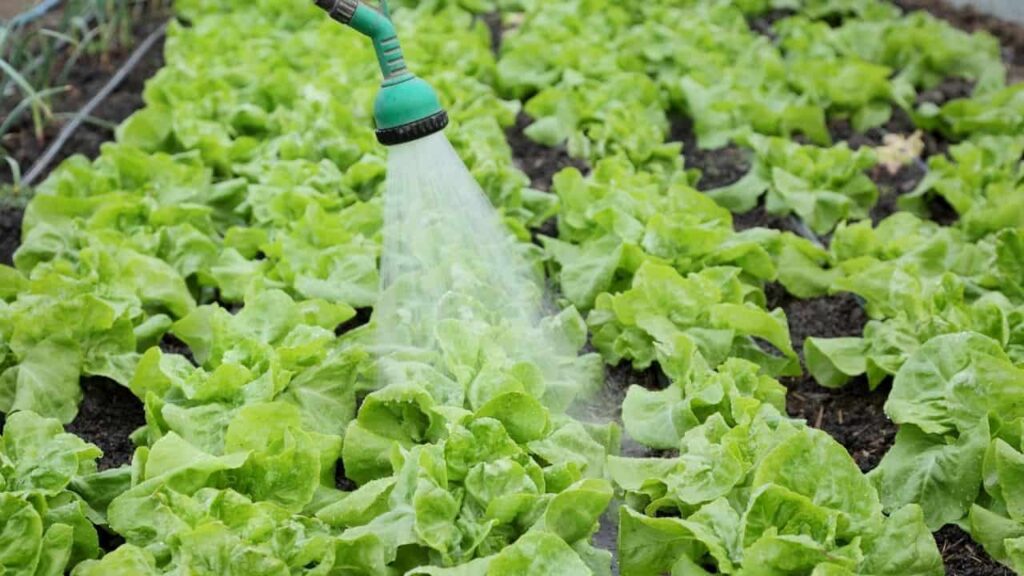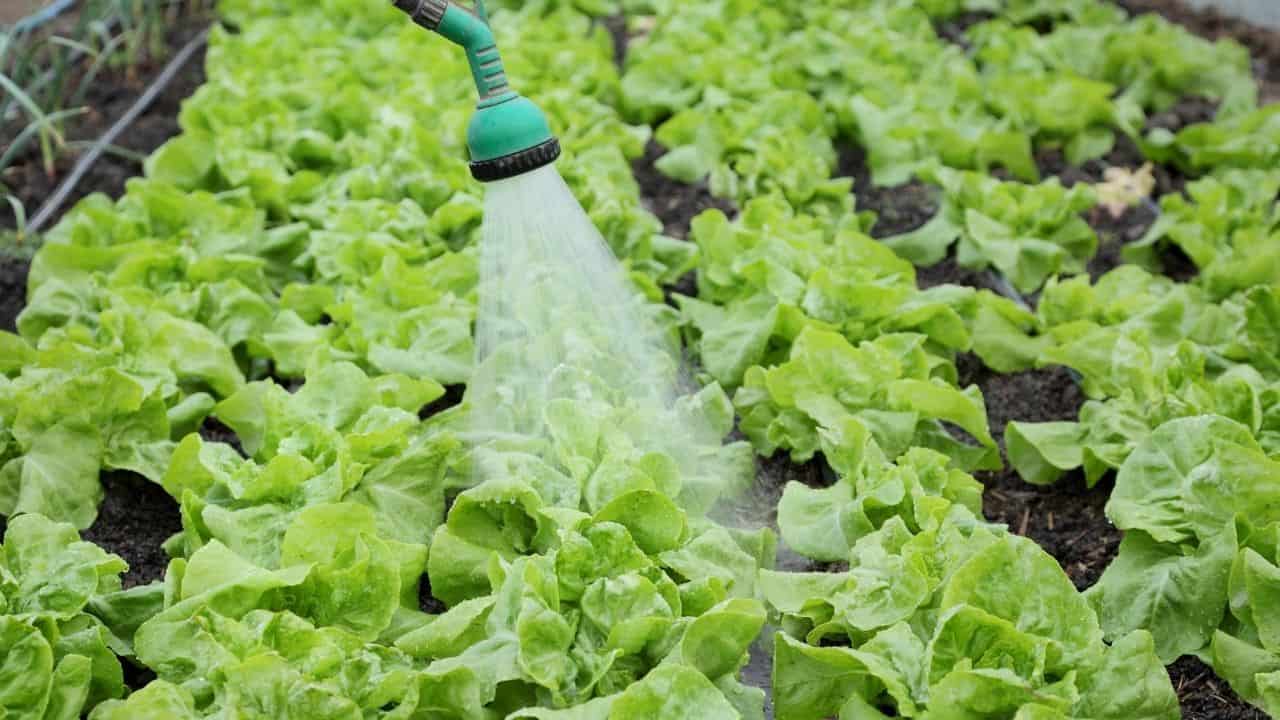So you’ve decided to grow your own lettuce, and now you’re wondering, “How often should I water lettuce?” Well, watering lettuce is a crucial aspect of its care, as too much or too little water can impact the plant’s growth and health. In general, lettuce prefers consistently moist soil, so it’s important to keep an eye on the moisture levels and water accordingly. However, you also need to be careful not to overwater, as this can lead to root rot and other issues. In this article, we’ll guide you through the factors to consider when determining the watering frequency for your lettuce, ensuring you can enjoy those crisp and flavorful leaves in no time.
How Often Should I Water Lettuce?
Growing lettuce can be a rewarding endeavor, whether you have a small backyard garden or a larger plot of land dedicated to growing vegetables. One important aspect of lettuce care is knowing how often to water it. The water requirements of lettuce can vary depending on several factors, such as the stage of growth and the weather conditions. In this article, we will explore the factors to consider when determining how often to water lettuce, as well as provide tips and tricks to help you maintain healthy and thriving lettuce plants.

Factors to Consider
Several factors come into play when determining how often you should water your lettuce. These factors include the stage of growth, weather conditions, soil moisture, and the specific lettuce variety you are growing. Understanding these factors will help you make informed watering decisions.
Watering Frequency for Seedlings
Seedling lettuce plants are delicate and require more frequent watering compared to mature lettuce plants. During the germination and early growth stages, it is essential to keep the soil consistently moist. Water the seedlings gently to avoid dislodging them or compacting the soil. Aim to provide enough water to keep the top layer of soil damp, but be cautious not to oversaturate it, as this can lead to dampening-off disease or root rot.
Check the moisture level of the soil regularly by sticking your finger about an inch into the ground. If it feels dry, it’s time to water. In general, seedlings may need watering once or twice a day, depending on the weather conditions and the moisture-retention capabilities of your soil.

Watering Frequency for Mature Lettuce
Once your lettuce plants have reached maturity, their watering requirements will change. At this stage, you should focus on maintaining consistent moisture in the root zone while avoiding overwatering. Overwatering can lead to disease and pest problems, as well as poor root development.
As a general guideline, mature lettuce plants will need watering every 2-3 days. However, this can vary depending on factors such as the weather, soil type, and the specific needs of the lettuce variety you are growing. It is important to monitor the moisture level of the soil both before and after watering to ensure you are providing the right amount of moisture.
Determining Watering Needs
To accurately determine the watering needs of your lettuce plants, pay close attention to the soil moisture and the overall health of the plants. As mentioned earlier, your finger can be a useful tool for checking the moisture level of the soil. Additionally, monitoring the overall health and appearance of the lettuce plants will help you identify if they are receiving enough or too much water.

Signs of Overwatering
Overwatered lettuce plants may exhibit certain signs that indicate they are getting more water than they need. These signs can include yellowing or wilting leaves, a slimy or rotten smell coming from the soil, and the presence of mold or fungus on the plant or in the surrounding soil. If you notice these signs, it is crucial to adjust your watering practices accordingly to prevent further damage to the plants.
Signs of Underwatering
Underwatered lettuce plants may show signs of stress and dehydration. These signs can include wilting leaves, a dry and brittle texture, and a dull or faded appearance. If you notice these signs, it is important to increase the frequency and amount of water you provide to the plants.

Watering Methods
There are several watering methods that you can employ to keep your lettuce plants properly hydrated. The most common methods include hand watering, drip irrigation, and soaker hoses. Each method has its advantages and disadvantages, so it is essential to choose the one that works best for your specific needs and resources.
Hand watering allows for precise control of the amount of water each plant receives, but it can be time-consuming if you have a large lettuce patch. Drip irrigation systems are more efficient and can deliver water directly to the root zone, reducing water waste. Soaker hoses are another option that can provide slow and even watering, promoting deeper root growth.
Best Time of Day to Water
The timing of your watering sessions also plays a role in the overall health of your lettuce plants. It is generally recommended to water lettuce in the early morning or late afternoon to avoid excessive moisture on the leaves during the cooler evening hours. Watering during these times allows the plants to absorb the moisture before the heat of the day, reducing the risk of fungal diseases.

Watering Techniques
When it comes to watering lettuce, there are a few techniques you can employ to ensure optimal moisture distribution. One technique is to water in a circular pattern around each plant, allowing the water to penetrate the soil evenly. Avoid watering the foliage directly, as this can promote the spread of diseases.
Another technique is to water deeply but infrequently. This encourages the lettuce plants to develop deeper root systems, making them more resilient during periods of drought. Thoroughly saturate the soil with each watering session, ensuring the water reaches the root zone.
Watering Tips and Tricks
To help you maintain healthy and happy lettuce plants, here are some additional tips and tricks:
Mulch around the base of the lettuce plants to retain moisture and reduce weed growth. Organic materials such as straw or compost can be used as mulch.
Place a layer of plastic or cardboard beneath the mulch to further suppress weed growth and conserve moisture.
Consider using a rain gauge or a moisture meter to accurately measure the amount of water the plants are receiving.
Keep an eye on the weather forecast and adjust your watering schedule accordingly. If rain is expected, you may need to reduce or skip a watering session.
Regularly inspect the soil for moisture, especially during hot and dry periods. Adjust your watering frequency and duration as needed.
By considering all these factors, monitoring the moisture level of the soil, and observing the signs of overwatering or underwatering, you can ensure that you are effectively watering your lettuce plants. With proper hydration, your lettuce will thrive and provide you with delicious and nutritious leaves for salads, sandwiches, and more. Happy growing!



